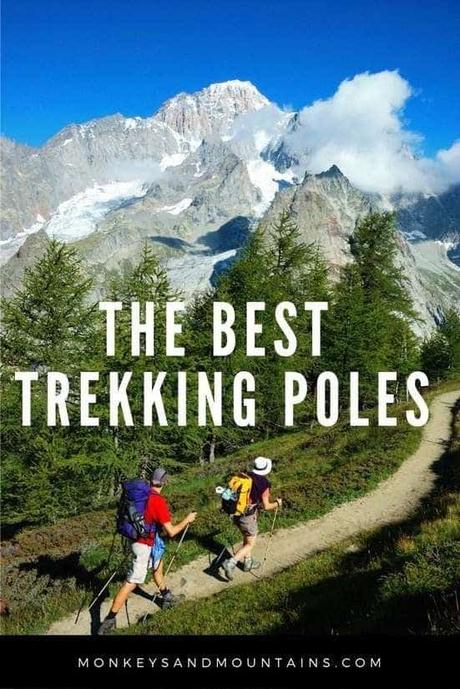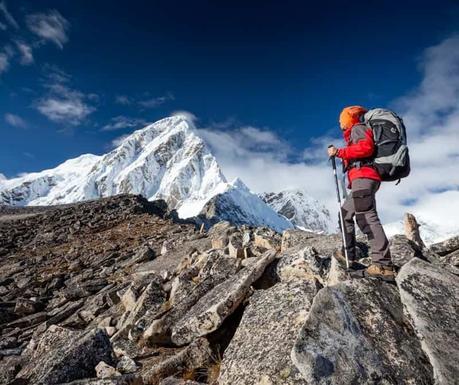Trekking poles are a must-have piece of gear, especially you're doing a longer hike or trek. Find out whether you should choose between carbon fibre or aluminum and why you'd want to hike with poles.

What are the Benefits of Hiking with Trekking Poles?
By hiking with poles, you reduce the weight on your knees anywhere from 2 lbs per step up to 5 lbs per step if you're carrying a heavy load. That adds up to a lot of weight reduction over a day or a multi-day trek.
In addition, you'll get tired less quickly since you've redistributed the weight. And once you find your rhythm, you'll also hike faster, since you'll propel yourself forward slightly and therefore take slightly longer strides. And your posture will be more open giving you additional lung capacity than if you were hiking slightly hunched over.
Finally, trekking poles help you balance. They come in very handy on slippery terrain. I don't know how many times they've saved me from slipping down a wet trail.
Related Reading: Best Backpacks of 2019.Do You Need Hiking Poles on Shorter Hikes?

I definitely recommend them for treks (multi-day hikes) and especially if you're carrying your gear. However, I use them even on day hikes. I've had two knee surgeries and find they really help reduce knee strain - especially when you're descending steep terrain.
If you have bad knees or hips look for hiking with poles that offer a shock-absorbent feature. This will help further reduce the strain on your knees and hips. Check out the options below to find the ones that work best for you.
If you don't have knee issues you may not need poles on shorter hikes. It's a matter of personal preference.
Related Reading: Hiking Vs Trekking Vs Mountaineering: What's the Difference?
How to Use Hiking/Trekking Poles
During Ascent: Shrink the adjustable poles to a shorter setting so that your hands are slightly lower than your elbow.
On Flat Terrain: Your hands and elbows should be parallel to the ground.
Descending: Expand the poles so that your hands are slightly higher than your elbows. Take a few steps and adjust as necessary. On steeper terrain, you may have to expand them even more.
Related Reading: What to Pack On Your Day HikeCarbon Fibre Vs Aluminim Hiking Poles: Which Is the Better Option?
It depends on how you'll be using your hiking/trekking poles.
Carbon fibre hiking poles are usually lighter than alumium. They're also better at reducing the vibrations in the hand since they're a stiff material. The downside is that they're usually more expensive. They're a good choice if you do hard hikes regularly or will be using them for trekking.
Alumimum hiking poles are more afforable. They're typically heavier than carbon fibre poles and can be prone to bending. They're a good choice if you're new to hiking or will be using them for day hikes.
Related Reading: Strength Training for Hiking: A Step-By-Step Plan.
